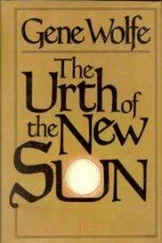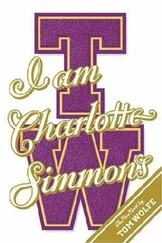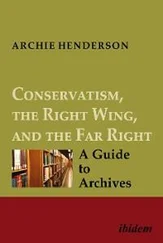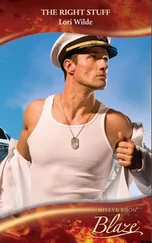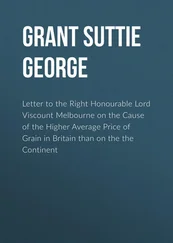Tom Wolfe - The Right Stuff
Здесь есть возможность читать онлайн «Tom Wolfe - The Right Stuff» весь текст электронной книги совершенно бесплатно (целиком полную версию без сокращений). В некоторых случаях можно слушать аудио, скачать через торрент в формате fb2 и присутствует краткое содержание. Жанр: Современная проза, на английском языке. Описание произведения, (предисловие) а так же отзывы посетителей доступны на портале библиотеки ЛибКат.
- Название:The Right Stuff
- Автор:
- Жанр:
- Год:неизвестен
- ISBN:нет данных
- Рейтинг книги:3 / 5. Голосов: 1
-
Избранное:Добавить в избранное
- Отзывы:
-
Ваша оценка:
- 60
- 1
- 2
- 3
- 4
- 5
The Right Stuff: краткое содержание, описание и аннотация
Предлагаем к чтению аннотацию, описание, краткое содержание или предисловие (зависит от того, что написал сам автор книги «The Right Stuff»). Если вы не нашли необходимую информацию о книге — напишите в комментариях, мы постараемся отыскать её.
The Right Stuff — читать онлайн бесплатно полную книгу (весь текст) целиком
Ниже представлен текст книги, разбитый по страницам. Система сохранения места последней прочитанной страницы, позволяет с удобством читать онлайн бесплатно книгу «The Right Stuff», без необходимости каждый раз заново искать на чём Вы остановились. Поставьте закладку, и сможете в любой момент перейти на страницу, на которой закончили чтение.
Интервал:
Закладка:
"Well… things are beginning to stack up a little," said Gordo. It was the same old sod-hut drawl. He sounded like the airline pilot who, having just slipped two seemingly certain mid-air collisions and finding himself in the midst of a radar fuse-out and control-tower dysarthria, says over the intercom: "Well, ladies and gentlemen, we'll be busy up here in the cockpit making our final approach into Pittsburgh, and so we want to take this opportunity to thank you for flying American and we hope we'll see you again real soon." It was second-generation Yeager, now coming from earth orbit. Cooper was having a good time. He knew everybody was in a sweat down below. But this was what he and the boys had wanted all along, wasn't it? They had wanted to take over the complete re-entry process—become true pilots in this damned thing, bring her in manually—and the engineers had always shuddered at the thought. Well, now they had no other choice, and he had the controls. On top of that, during his final orbit he would have to keep the capsule at the proper angle, by eye, on the night side of the earth and then be ready to fire the retro-rockets soon after he entered daylight over the Pacific. No sweat. Just made it a little more of a sporty course, that was all—and Gordo lined up the capsule, hit the button for the retro-rockets, and splashed down even closer to the carrier Kearsage than Schirra had.
No one could deny it… no brethren, old or new, could fail to see it… when the evil wind was up, ol' Gordo had shown the world the pure and righteous stuff.
Over the next week Gordo became the most celebrated of all the astronauts aside from John Glenn himself. Ol' Gordo!—whose confreres had pictured him as forever bringing up the rear… There he was, sitting on the back of the open limousine, in parade after parade… Honolulu, Cocoa Beach, Washington, New York… And such parades! The ticker-tape parade in New York was one of the biggest ever, Glenn-scale, with signs along the way, saying things such as GORDO COOPER—YOU'RE SUPER-DUPER! in letters three or four feet high. Not only that, he addressed a joint session of Congress, just as Glenn had. A "textbook flight" like Schirra's was all well and good, but there was nothing like a hair-raiser to capture the imagination and stir the gourds. Gordo was also the first American to spend an entire day in space, of course, and he had put the United States back in the ball game with the Soviets. The role of single-combat warrior seemed more glorious than ever.
15 — The High Desert
By the time of Gordon Cooper's flight, Chuck Yeager had returned to Edwards Air Force Base. He was only thirty-nine, the same age, it so happened, as Wally Schirra and Alan Shepard and two years younger than John Glenn. Yeager no longer had quite the head of dark curly hair that everybody at Edwards saw in the framed photographs of him stepping out of the X-1 in October 1947. And God knows, his face had more mileage on it. This was typical of military pilots by that age and came not so much from the rigors of the job as from taking the sun rays head-on twelve months every year out on the concrete of the flight lines. Yeager had the same trim muscular build as always. He had been flying supersonic fighter aircraft as regularly, day in and day out, as any colonel in the Air Force. So in the ten years since he had made his last record-setting flight here at Edwards, that wild ride to Mach 2.4 in the X-1A, he really hadn't changed too much. You couldn't say the same about Edwards itself.
When Yeager had departed in 1954, Pancho's had still been standing. Today the base was loaded with military and civil-service personnel, every GS-type in the manual, working for the Air Force, for NASA, even for the Navy, which had a small piece of the X-15 program. At four o'clock it was worth your life to be heading upstream during the mad rush from the air conditioners in the office buildings to the air conditioners in the tract homes in Lancaster.
This much Yeager already knew about; this was the part that was easy to take. He had been commanding a squadron of F-100s at George Air Force Base, which was only about fifty miles southeast of Edwards in the same stretch of prehistoric dry-lake terrain. Yeager and Glennis and their four children had lived at Victorville in the same sort of housing development you found in Lancaster; just a bit more barren, if anything, a little grid of Contractor Suburbans lined up alongside Interstate Highway 15. The same old arthritic Joshua trees dared you to grow a blade of grass, much less a real tree, and the cars heading from Los Angeles to Las Vegas hurtled by without so much as a flick of the eye. Not that any of this weighed upon Yeager, however. As commander of a squadron of supersonic fighters he had led training operations and readiness maneuvers over half the world and as far away as Japan. Besides, nobody stayed in the Air Force because of the glories of the domestic architecture. Where he was living was standard issue for a colonel such as himself who after twenty years was making just a little over two hundred dollars a week, including extra flight pay and living allowance… and without magazine contracts or any other unorthodox goodies…
The Air Force had brought Yeager back to Edwards two years ago to be director of flight test operations. Last year, 1962, they created the new Aerospace Research Pilot School and made him commandant. ARPS, as the school became known, was part of big plans the Air Force had for a manned space program of its own. As a matter of fact, the Air Force had envisioned a major role in space ever since the first Sputnik went up, only to be thwarted by Eisenhower's decision to put the space effort in civilian hands. They now wanted to create a military program, quite apart from NASA's, using fleets of ships such as the X-20 and various "lifting body" craft, wingless ships whose hulls would be shaped to give them aerodynamic control when they re-entered the earth's atmosphere, and the Manned Orbiting Laboratory, which would be a space station. Boeing was building the first X-20 at its plant in Seattle. The Titan 3C rocket booster it would require was almost ready. Six pilots had already been chosen to train to take it into orbit.
The X-20 and the MOL were not yet operational, of course. In the meantime, it seemed to be highly important that Air Force pilots be chosen as NASA astronauts. The prestige of the Astronaut absolutely dominated flying, and the Air Force was determined to be the prime supplier of the breed. Four of the nine new astronauts selected in 1962, before ARPS was instituted, had been from the Air Force; that was not considered good enough.
To tell the truth, the brass had gone slightly bananas over this business of producing astronauts. They had even set up a "charm school" in Washington for the leading candidates. The best of the young test pilots from Edwards and Wright-Patterson flew to Washington and were given a course in how to impress the NASA selection panels in Houston. And it was dead serious! They listened to pep talks by Air Force generals, including General Curtis LeMay himself. They went through drills on how to talk on their feet—and that was the more sensible, credible part of the course. From there it got right down to the level of cotillion etiquette. They were told what to wear to the interviews with the engineers and the astronauts. They were to wear knee-length socks, so that when they sat down and crossed their legs no bare flesh would show between the top of the socks and bottom of the pant cuffs. They were told that to drink at the social get-togethers in Houston: they should drink alcohol, in keeping with the pilot code of Flying & Drinking, but in the form of a tall highball, either bourbon or Scotch, and only one. They were told how to put their hands on their hips (if they must). The thumbs should be to the rear and the fingers forward. Only women and interior decorators put the thumbs forward and the fingers back.
Читать дальшеИнтервал:
Закладка:
Похожие книги на «The Right Stuff»
Представляем Вашему вниманию похожие книги на «The Right Stuff» списком для выбора. Мы отобрали схожую по названию и смыслу литературу в надежде предоставить читателям больше вариантов отыскать новые, интересные, ещё непрочитанные произведения.
Обсуждение, отзывы о книге «The Right Stuff» и просто собственные мнения читателей. Оставьте ваши комментарии, напишите, что Вы думаете о произведении, его смысле или главных героях. Укажите что конкретно понравилось, а что нет, и почему Вы так считаете.


